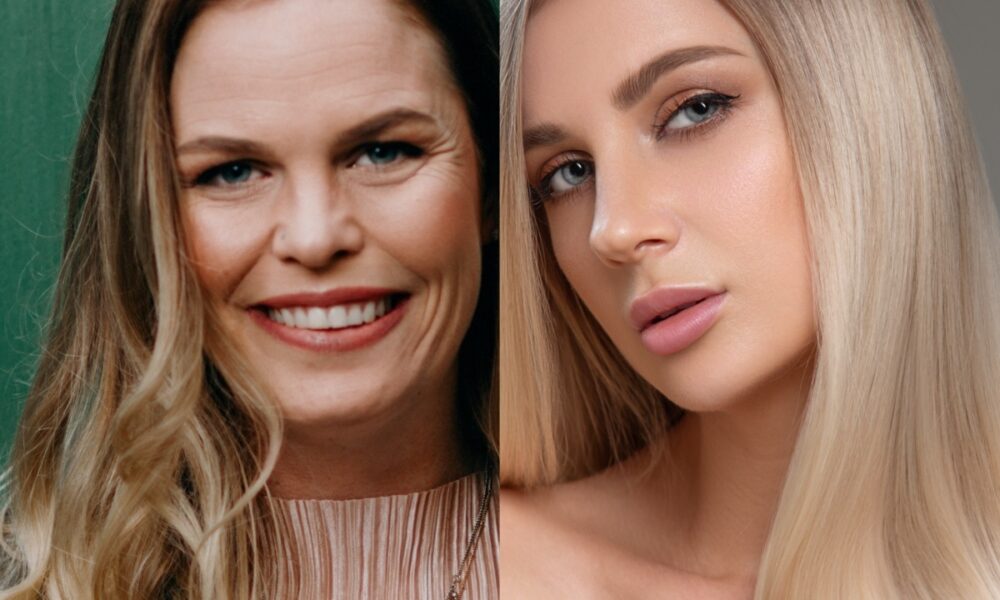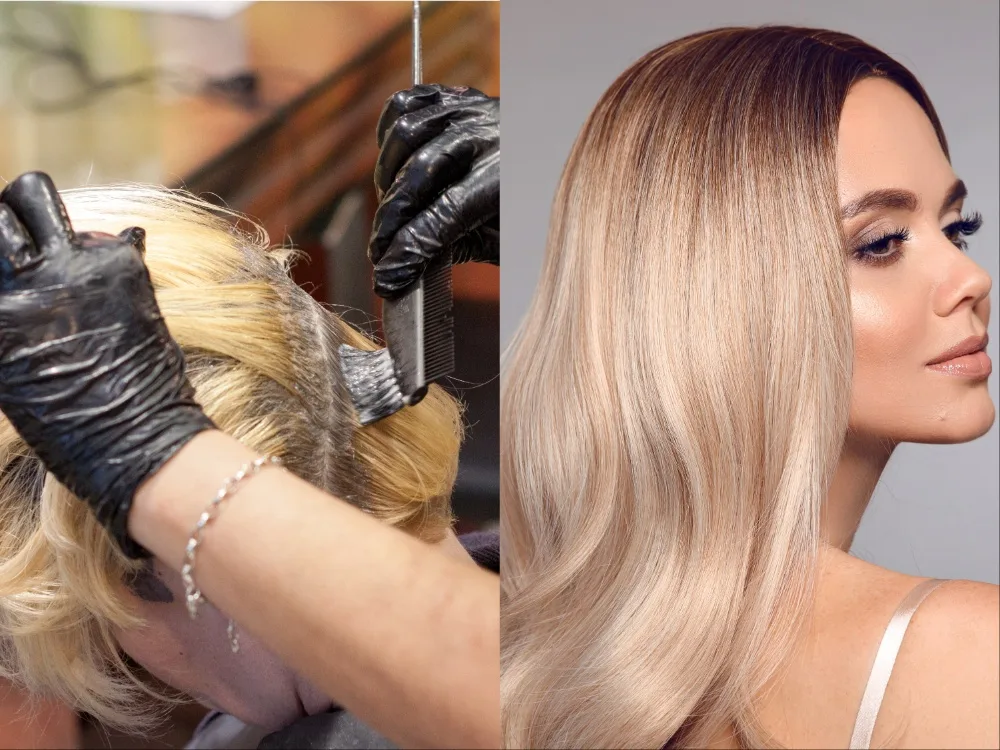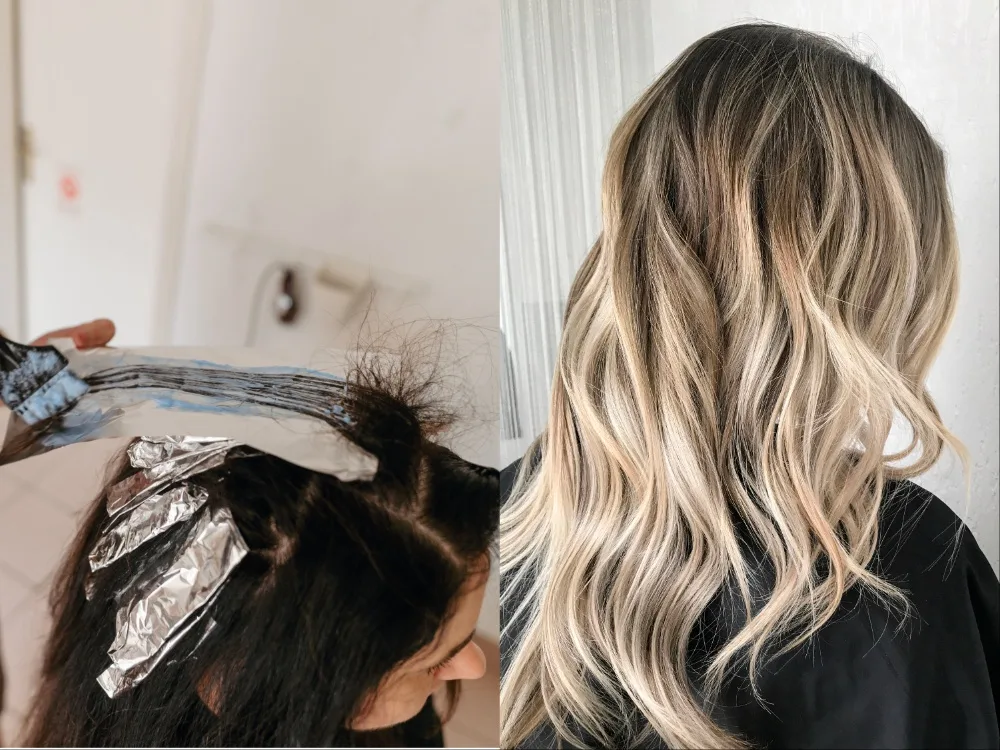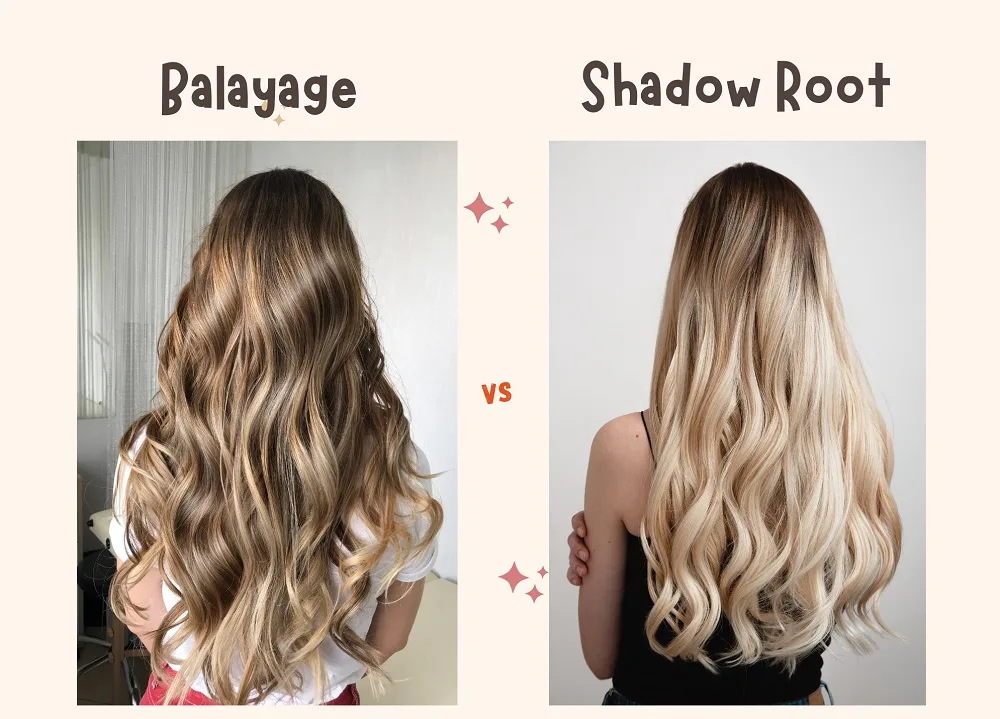
Similarities and Differences – HairstyleCamp
If you’re looking for a new and trendy hairstyle to bring in for the summer, you’ve come to the right place! This time of year everyone goes to the salon to lighten their hair, but they are disappointed when they realize how much time and money goes into maintaining that blonde hair.
Two amazing styles emerged from the desire to get that “sunken” look without all the maintenance and hassle of relighting those dark roots as soon as they peek out (which is usually every few weeks). Those styles/techniques are…drumroll please…Shadow Root and Balayage.
Chances are you’ve seen the hottest celebrities, or even the cashier at your supermarket rocking these styles! That’s because they look great on almost everyone!
That being said, Shadow Root and Balayage can easily get confused, so before you tell your hairstylist you want one or the other, make sure you’re sure about which term refers to the style you really want.
After all, there’s nothing worse than sitting in the living room chair expecting to get one thing and then walking out with something completely different just because of a little miscommunication.
In this article, we’ll discuss the similarities and differences between Shadow Root and Balayage so that the next time you sit in the chair, you know exactly what you want and how to get it!
What is a “shadow root”?

According to one of the leading brands of professional hair care, Wella Professionals states this:
A shadow root is – simply put – a darker, softly diffused root area that creates contrast against the mid-lengths and ends of your client’s hair.
To put it in other terms, root shading is a technique used by hairstylists to keep the roots of the hair darker than the rest of the hair. The darkness of the roots can contrast sharply with the rest of the hair, or it can be similar. Also, the length of the dark part of the roots can vary.
But don’t worry, “shadow root” doesn’t mean you have a hard line between dark roots and lighter hair. As mentioned above, the darker part is “gently diffused” to move into the lighter mid-lengths of the hair.
What is Balayage?

Balayage is a technique for highlighting hair, in which the colorist paints color on a person’s hair freehand, using long, sweeping strokes. When done properly, it results in a more natural look.”
In other words, your stylist will paint the lightener on your hair section by section to create highlights throughout the hair. Balayage can be done subtly, or with more contrasting colors.
The roots of the hair remain in their natural color, while the highlights are simply added along the middle and ends of the hair to create a “sunken” look.
However, the natural color of the hair, or the color of the roots, will also be seen throughout the hair between the highlights.
Shadow Root Vs. Balayage: a detailed comparison
Similarities Between Root Shadow and Balayage

Dark Roots: The biggest similarity between shade and bangs is the fact that the roots are darker than the rest of the hair.
In shadow root, the roots are dyed to be darker than the rest of the hair. In balayage, highlights are dyed throughout the mid-lengths and ends of the hair, leaving the roots naturally darker.
Low maintenance: Another similarity between root shadow and bangs is the level of maintenance required for these hairstyles. Since the roots are darker, or your natural color, there is no need to dye them every few weeks. This can save a lot of time and money!
Versatility: Finally, a third similarity between these two styles is the fact that they are both very diverse. In a shadow root or a blage, there are so many options based on your personal preference.
You can go with more contrasting dark and light colors or subtler variations. The roots of your shade can extend the length of the hair, or they can be shorter.
Your balayage can show thicker, denser highlights all over your head, or it can be applied gently and lightly. Anyway, there are lots of options!
Below is a table summarizing the similarities between root shadow and blage:
| Properties | shadow root | Balayage |
|---|---|---|
| The roots are darker than the rest of the hair. | Yes | Yes |
| The maintenance required is relatively low. | Yes | Yes |
| This style is versatile and can be changed to suit your preferences. | Yes | Yes |
Differences between root shadow and blage

Now that we’ve discussed the similarities between Shadow Root and Blaj, it’s important to analyze the differences as well. Being able to differentiate between these styles is critical to communicating exactly what you want to your stylist.
technique: One difference between a shadow root and a bulge is the technique in which they are applied. In a shadow root, a darker color is applied to the roots and blended or feathered to the mid-lengths of the hair, either suddenly or gradually.
In balayage, highlights are added to the mid-lengths and ends of the hair, but the roots are left alone.
Appearance: Another difference between these two styles is the overall appearance. In shadow root, you are dealing with more solid colors. A darker color transitions to a lighter color to create dark roots and light ends.
In Blaj, darkness and light are more intertwined. Most of the darkness is of course in the roots, but it can also be in the ends, between the highlights.
product: A third difference in these styles is the product needed to achieve them. Of course, the product will vary slightly in each individual case, but for the most part, root shadow requires a semi-permanent or permanent color, and balayage requires a brightener such as bleach.
Below is a table summarizing the differences between root shadow and blage:
| Properties | shadow root | Balayage |
|---|---|---|
| technique | Brightener is painted on the mid-lengths and ends of the hair using strokes with a free hand. | The lightener is painted on the lengths of the hair and the ends in the middle using freehand strokes. |
| Appearance | Darker roots transition to solid mid-lengths and lighter ends. | Darker hair is naturally present throughout the head, but mostly at the roots. |
| product | A semi-permanent or permanent color is used. | Bleach or bleach is used. |
In conclusion
Both the shadow root and balayage are gorgeous, low maintenance styles! However, they also have some differences. With the help of this article, you can make an informed decision about which style will suit you best!
Main things you should know:
In the table below, I have compiled a table that summarizes all the similarities and differences of root shadow and balayage!
| feature | shadow root | Balayage |
| The roots are darker than the rest of the hair. | Yes | Yes |
| The maintenance required is relatively low. | Yes | Yes |
| This style is versatile and can be changed to suit your preferences. | Yes | Yes |
| A darker color is applied to the roots and blends slightly with the mid-lengths of the hair. | Yes | No |
| The lightener is painted on the lengths of the hair and the ends in the middle using freehand strokes. | No | Yes |
| Darker roots transition to solid mid-lengths and lighter ends. | Yes | No |
| Darker hair is naturally present throughout the head, but mostly at the roots. | No | Yes |
| A semi-permanent or permanent color is used. | Yes | No |
| Bleach or bleach is used. | No | Yes |